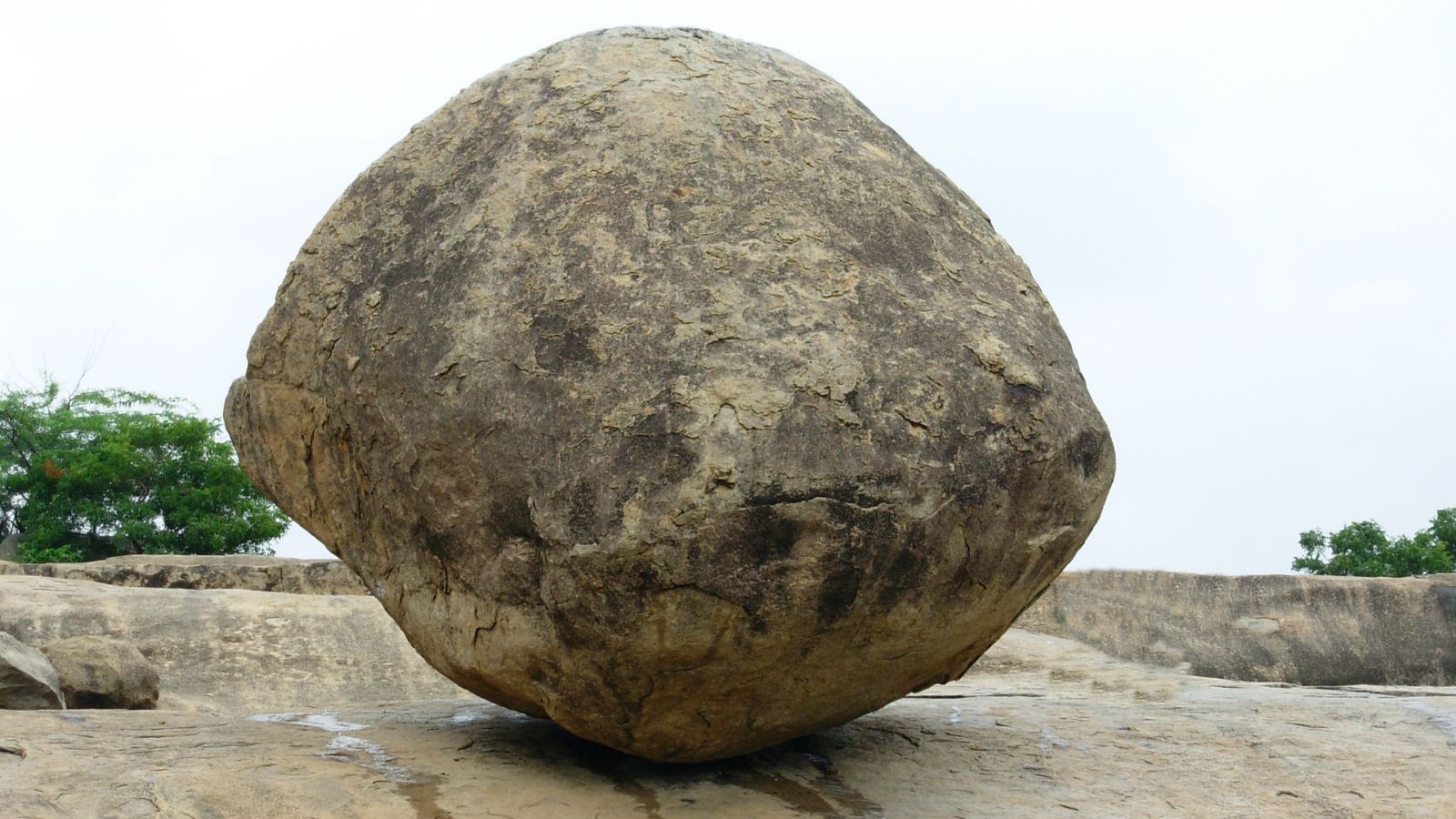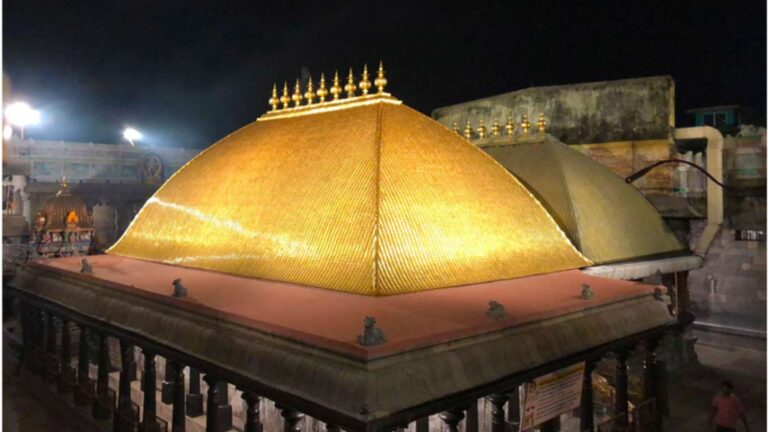In the coastal town of Mahabalipuram, Tamil Nadu, visitors will find one of India’s most fascinating natural wonders, popularly known as Krishna’s Butterball. This massive 250-ton granite boulder, measuring 20 feet tall and 5 meters wide, rests precariously on a 45° slope and has remained unmoved for over 1,300 years. Despite its unstable appearance, the rock’s balance continues to baffle scientists and visitors alike. Locals call it Krishna’s Butterball due to the legend that links it to Lord Krishna’s love for butter, while its Tamil name, Vaan Irai Kal, translates to Stone of the Sky God, hinting at its divine origin.
Geologists explain that the rock is a ventifact—a rock shaped by wind carrying sand or other particles, smoothing or carving it into unique shapes. It’s wind acting like sandpaper, polishing or sculpting the rock! The rock’s center of gravity perfectly aligned with the slope, keeping it stable.
Over the centuries, numerous attempts to move the rock have failed—once by Pallava king Narasimhavarman and later by British Governor Arthur Lawley, who used seven elephants in 1908, fearing the rock might roll. However, it remained firmly in place. This unshakable stability has fueled numerous myths, with some speculating divine or even extraterrestrial influences.
Krishna’s Butterball is a popular tourist attraction, drawing visitors who love taking playful photos pretending to “hold up” the rock. Surrounded by ancient 7th-century rock-cut temples such as the Shore Temple and Arjuna’s Penance, it offers a fascinating blend of history, mystery, and fun. Whether you believe it’s a geological marvel, an ancient relic, or something more mystical, visiting Mahabalipuram to witness this wonder in person is an experience that can leave you in awe.



